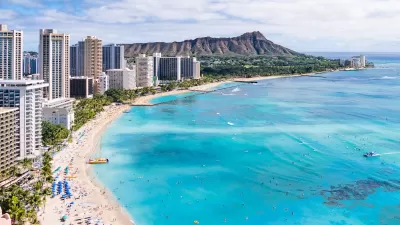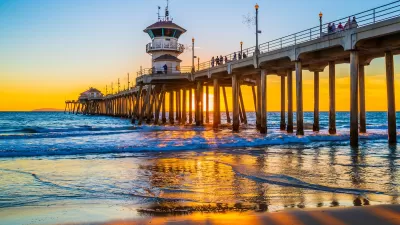Environmentalists are pushing the nuclear industry to do more to prepare for sea level rise. An estimated 13 nuclear plants in the U.S. are considered vulnerable now or in the future.

Christina Nunez writes of a threat to 13 nuclear power plants located in the United States—rising sea levels as a result of climate change. Nunez opens the story by citing the example of two reactors located off Florida's Biscayne Bay at the Turkey Point nuclear plant. The plant is licensed to operate until 2032. "At some point after that, if you believe the direst government projections, a good part of the low-lying site could be underwater," writes Nunez.
Nunez notes that the 2011disaster at Japan's Fukushima Daiichi nuclear plant shifted the debate about nuclear—especially with regard to sea level rise. Nunez cites the example of a pair of reactors in the United Kingdom that were "taken offline in 2013 because of concerns that an extreme event could overwhelm its seawall, which was then improved."
In the United States, the nuclear power industry is in the process of reevaluating its flood risks, producing a "strategy it calls FLEX, where key backup equipment is stationed at multiple locations so it can be shuttled to a distressed plant."
Given the 13 nuclear sites considered at risk, all located along the Atlantic and Gulf coasts, some believe that not enough is being done. "In the past, historical data about storms and flooding would inform the licensing requirements for a unit," explains Nunez, but sea level rise will render such historical data obsolete. Researchers have flagged four plants—in New Jersey, New Hampshire, and Connecticut—as particularly vulnerable.
The article includes more information on safety considerations at soon-to-be-decommissioned plants (such as Turkey Point, mentioned above) as well as ongoing rule-making processes that could implement additional safety regulations at nuclear plants.
FULL STORY: As Sea Levels Rise, Are Coastal Nuclear Plants Ready?

Planetizen Federal Action Tracker
A weekly monitor of how Trump’s orders and actions are impacting planners and planning in America.

Maui's Vacation Rental Debate Turns Ugly
Verbal attacks, misinformation campaigns and fistfights plague a high-stakes debate to convert thousands of vacation rentals into long-term housing.

Cuomo Is the Candidate of Both NIMBYs and Developers. What Gives?
In the New York City mayoral race, odd bedfellows align to preserve the housing status quo.

The Subversive Car-Free Guide to Trump's Great American Road Trip
Car-free ways to access Chicagoland’s best tourist attractions.

San Antonio and Austin are Fusing Into one Massive Megaregion
The region spanning the two central Texas cities is growing fast, posing challenges for local infrastructure and water supplies.

Charlottesville Temporarily Has No Zoning Code
A judge ordered the Virginia city to throw out its newly revised zoning code, leaving permitting for new development in legal limbo.
Urban Design for Planners 1: Software Tools
This six-course series explores essential urban design concepts using open source software and equips planners with the tools they need to participate fully in the urban design process.
Planning for Universal Design
Learn the tools for implementing Universal Design in planning regulations.
Heyer Gruel & Associates PA
JM Goldson LLC
Custer County Colorado
City of Camden Redevelopment Agency
City of Astoria
Transportation Research & Education Center (TREC) at Portland State University
Jefferson Parish Government
Camden Redevelopment Agency
City of Claremont




























